The Art of Oramaku
By: John Kosmopoulos
All images and texts © John Kosmopoulos, All Rights Reserved
An Alignment of Creativity
Note: All images and texts on these pages are protected by copyright and may not be used, shared or reproduced in any way for any purpose without the author’s permission.
Many photographers have spoken about “vision” in photography throughout history in various ways. I, like many other photographers, do not believe in a singularity or ubiquity of vision. In my opinion, artistic vision is much more personal and multidimensional. When I was asked about how I would describe my overall photographic vision in a previous interview, my answer was the following: “the pursuance of an exquisite enlightenment with the practice of an insightful imagination”. It was a spontaneous almost Proustian-like alliteration of ideas at the time but I have since delved much deeper into its practical meaning as I do feel this unabated curiosity and almost spiritual connection to subjects that spark my inspiration as a photographer. My initial answer was meant to transform my approach to photography. It was also meant to further consider the striking power of Henri Cartier-Bresson’s words, translated from the French here, in a new and exciting way for me:
“To take photographs is to hold one’s breath when all faculties converge in the face of fleeing reality. It is at that moment that mastering an image becomes a great physical and intellectual joy. To take photographs means to recognize—simultaneously and within a fraction of a second—both the fact itself and the rigorous organization of visually perceived forms that give it meaning. It is putting one’s head, one’s eye, and one’s heart on the same axis.” (The Mind’s Eye: Writings on Photography and Photographers)
To better grasp its meaning, I have had a version of this quote on my website in the original French as a reminder to myself to always strive for something profound in what I do in my art. Perhaps it is also another way to consider the idea of “pure photography” (free of derivation from other traditional art forms like painting, drawing, etc.) embraced by the Group f/64 (Twentieth Century San Francisco photographers that included the likes of Ansel Adams) as an “informed photography” (an understanding of the full potential of this artistic and technological medium) moving towards distinction rather than starting with a state of underived “purity”. After all, some of the Old Masters may have used a “camera obscura” to achieve their realistic representations and painters often use photographs to paint compositions. Photography has also “informed” other art forms. Many writers have attempted to consider “Photography” in its own context (e.g., Susan Sontag’s polemic, “On Photography”; Roland Barthes, “Camera Lucida”). But the achievement of such a “purity”, if such a thing may exist, may not be our ultimate destination afterall. When photography is everywhere, when everyone is a photographer, when is it fine art? It is the value of photography as an ever-evolving discipline that I think we must cherish and not the selfies, Warholian “15 minutes of fame” or the gamification of photography (likes, hearts, awards, etc.). We can learn from other art forms but I think we have to learn and practice Henri Cartier-Bresson’s words with abandon, in my humble opinion, to help better inform us in our photography in a self-reflective, self-inspired and even self-reinforcing way.
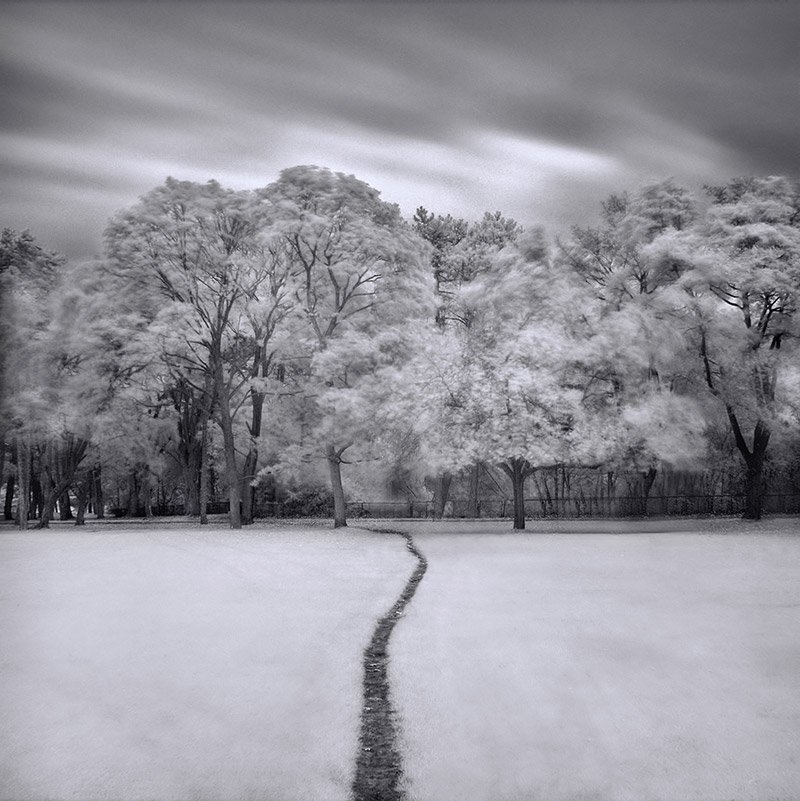
The Art of Oramaku
Over the years, several photographers have expressed to me that they believed that the thematic essence of most of my photography seems to be rooted in a minimalistic style regardless of the intricate and abstracted elements inherent in some of my approaches to art photography across subjects. I tend to agree with this sentiment. In fact, I appreciated this analysis of my photography, so much so, that I began to explore the subjective and objective substance of my photography to piece together this atlas of metacreative imperatives to help me better explore what makes minimalistic photography so enticing to still the mind and allow for multisensory and metaphorical experiences. My initial constructs of what photographic vision is to me became this veritable synthesis of integral and integrated ideas and practices, namely those of Zen principles (Japanese aesthetics), aspects of neuroscientific theories on creativity (neuroaesthetics) and my own psychological framework of motivations for artistic eclecticism, experimentation and evolution in fine art photography (“felt aesthetic”). For those of you who may be familiar with my work, I have written and spoken about these ideas in various ways in my talks and with fellow photographers over several years. But when you consider these three concepts, they also align with Cartier-Bresson’s “axis” on what photography is, and can be, in all its clarity and promise. I have since called this approach to minimalism, “The Art of Oramaku”.
“Oramaku”™ (or “Orama-ku”) is a hybrid or fusion of the words “orama”, which is Greek for “vision”, and the word “haiku”, which is Japanese for “short poem”. In essence, it is a way of bridging Western and Eastern traditions of encapsulated beauty and wonderment about the natural world and built environment along with linking subjective and objective theories on art. This concept fully embraces the art of minimalism across photographic genres including abstracts, architecture, flowers, landscapes or snowscapes while considering how this alignment of aesthetic values informs our practice. It also includes a complimentary alignment on this axis that speaks to a transient synthesis of our own evolving beliefs about photography. (I have offered black and white photographs for this feature for the sake of cohesion).
You may be asking how this form of minimalism is different than what you observe in some photos. There is certainly a connection, but it is the way we consider the incitation, intention, intimacy, interactions and even interpretation of such approaches that may be different. When I created my “High Park, Toronto” photo (see above), I was fully immersed in the moment that I had experienced. Even when I was waiting for the infrared long exposure to complete, I was observing the will of the winds brushing against the trees and considering why I wanted to take this photograph. As a means of providing some further insight into the various aesthetic approaches and this art of minimalism, I will explore one aspect of each approach in depth and comment on how each relates and interacts with one another in practice in light of some of my photographs. I will also take you on a journey of artists, writers and photographers who have inspired me (and many others). This is an ongoing process for me and this introduction is only meant to consider how all of these ideas together may play a role in our photography. It may be easy to suggest that Japanese Aesthetics is the “eye”, Neuroaesthetics is the “mind”, and the Felt Aesthetic is the “heart”, but in practice, it is a multi-sensory expression of all three together (a “eye-mind-heart” connection) that can be considered as part of artistic vision. (As a side note, perhaps it is time to consider another word for “vision” and “fine art” to better represent this connection and free ourselves of the limits imposed by such ideas at times). Process and becoming is more important, in my opinion, than goals and achievements as it means we are always willing to evolve and consider the infinite trajectories of our own value as creatives. Given the nature of the topics, it can seem “technical” at times. To attempt to counteract that, I have added some questions (I will add more in the future) at the end of each section on my website that you may ask about your own photography to help create this nexus for a perhaps a “finer art” of photography (a way to evolve or progress in your minimalist fine art photography). The point of these questions is to consider turning them into statements about your artistry.
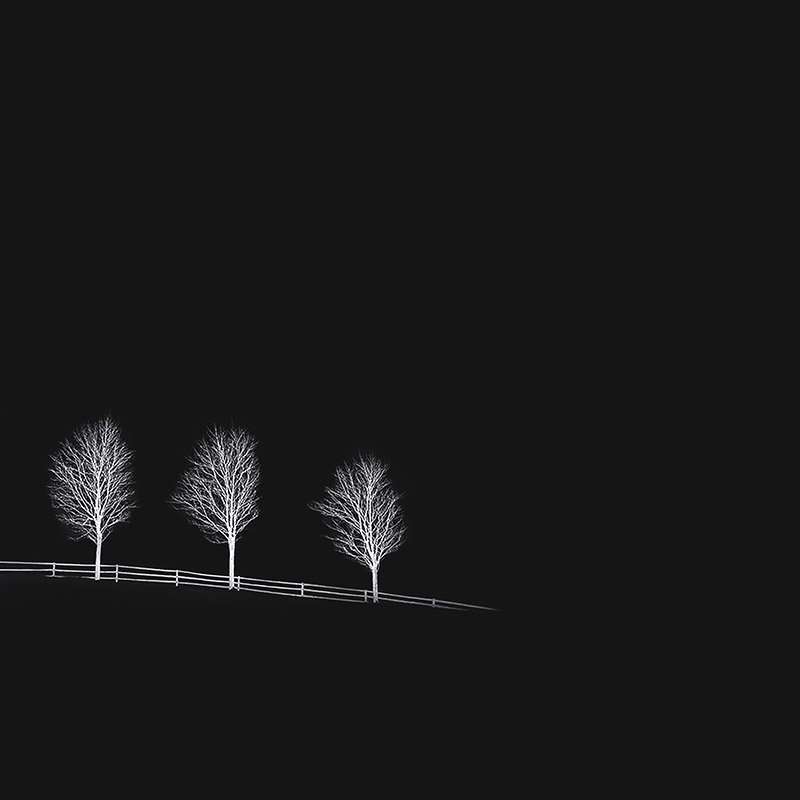
Japanese Aesthetics
Let me begin by saying that I am utterly enamoured with some of the Japanese aesthetic principles and the graceful living practices that lead to a less is more approach and an appreciation for the processes involved in creation. I am still very much learning about these practices. Upon reading more about this approach to life, there are several concepts that have resonated with many photographers including “Geidō” (process-based observances related to flower-arranging, gardens, theatre, calligraphy, tea-making and poetry, to name a few), “Yūgen” (an ineffable mystery that we sense about ourselves, others and the universe) and “Iki” (possessing imperfect and inherently appealing qualities). But, my focus will revolve around the simple complexity of “Wabi-Sabi”.
“Wabi-sabi” may be referred to as a mindful approach to the transitions and transience of an understated beauty in all its incompleteness and imperfections. It is sometimes simply referred to as “flawed beauty” or “wisdom in natural simplicity” (Wikipedia). Nature abounds by such beauty. As the saying goes, everything is in transition and change is the only constant. My award-winning series, “Prelude to Silence” (see below), captures a transition before and after a snowfall (depending on how close or far you are viewing this photo) as the sky does not seem to capture the snow falling but the contrast in the trees tells the story.
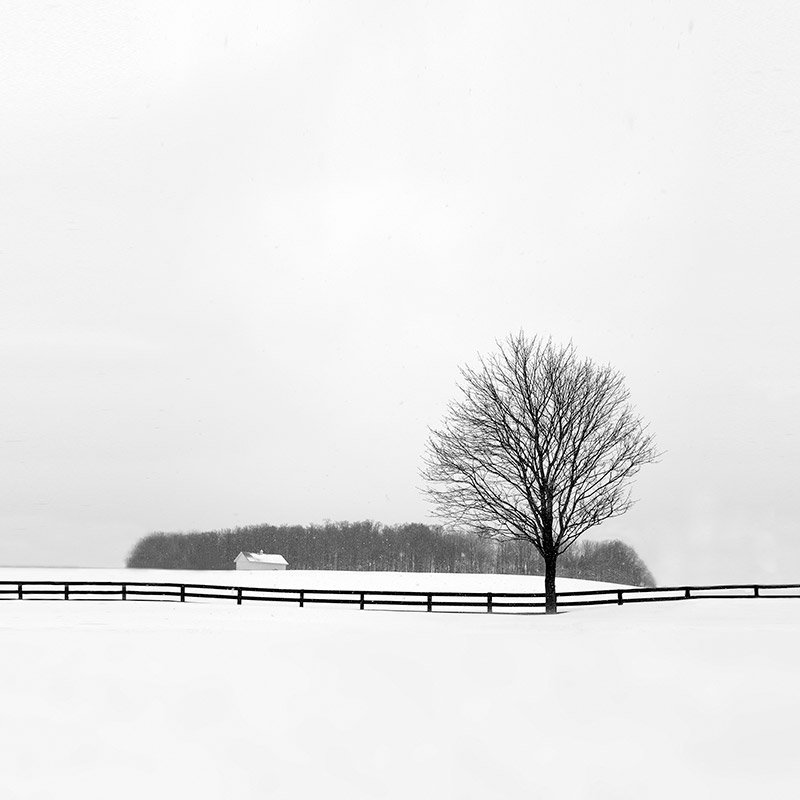
In some ways, it is an antidote to idealistic depictions and attempts at technical flawlessness in photography which does not guarantee aesthetic results. All you have to do is think about how we have been told by photographers that all aspects of a photo need to be tack sharp, that we need to use specific settings for a great photo, that we should embrace this and that vision (which may be a type of “anti-vision”), or use this and that tool in Photoshop, etc. This is not a criticism in any way (nobody should take it otherwise), as a technical but creative photo has its own allure, but a way to consider that photography as a fine art is beautifully imperfect but aging quite well, much like a fine bottle of wine (or perhaps Sake), in its strive for recognition and “purity”.
The practice of wabi-sabi is an informed process as much as it can become intuitive. It can offer much to photography as it is a way of appreciating a simplified approach but also a way of understanding, much like the Canadian artist Leonard Cohen wrote about, that the cracks in anything allow for the light of day to shine through. Perhaps this allows for a more enlightened view for the artist.
Neuroaesthetics
Although Japanese Aesthetics may be seen as a more subjective practice, “Neuroaesthetics” is a burgeoning science whose objectivist aspects, in my opinion, do not take away from the experience of what makes certain art, whether it be a Claude Monet or a Pablo Picasso, a Michael Kenna or Irene Kung, so influential and appealing. In fact, artists are scientists without always realizing it.
The idea of artists or photographers being “neuroscientists” is not new. There is this notion that you can reverse-engineer a work of art to understand the working of an artist’s creativity. I think there is some truth to that. Some of the pioneers of “neuroaesthetics”, from Semir Zeki, who proposed the theories of constancy and abstraction as part of the visual brain, to V.S. Ramachandran, who proposed perceptual principles or “laws” inherent in all pleasurable and rewarding art, have provided fertile ground for adding to the human equation as it pertains to the power of art to transform and transport us. Ramachandran’s ten laws of artistic experience, which includes the peak shift effect, perceptual problem-solving, contrast, grouping, isolation, symmetry, balance, repetition (orderliness, rhythm), the generic view point and visual metaphors, are all relevant considerations in this conversation. For the sake of brevity, I would like to specifically focus on the “peak shift effect” (or else we may be here forever!).
The “Peak Shift Effect” is well known in my own field of Psychology and the Behaviour Sciences as it is something that I have taught about in various contexts as an analyst and educator. This effect is often associated with how we are attracted by and prefer embellished or exaggerated results of something we are used to seeing or have learned to see in a certain way (i.e., learned stimuli) and this may be especially true in art. When we consider minimalist compositions, the proportion of negative space to positive space may help potentiate the effect with visual patterns and a contrast of subjects in the frame. It may be the reason why long exposure photography (whether black and white or colour), with depictions of time-frozen streaming clouds and velvety waters, offer some fulfilling impact when viewed. All you have to do is look at Michael Kenna’s photography to understand the impact of this approach or Irene Kung’s black and white and colour photography to understand the delicate exhalation of her creativity. We may also want to consider Mondrian’s grid-like abstractions or Rothko’s superimposed and imposing colour fields, with their almost 3D-like vibrant qualities, as alluring sensory experiences. It may be also why Picasso’s highly semantic and hyperbolic cubist works are considered to be, for lack of a better term, imagination enhancers. This effect is perhaps mediated by our recollections, our semantic interpretations and the emotional value of what we perceive as ultimately rewarding.
Upon first reflection, a neuroaesthetics approach may seem almost antithetical to the determinants of wabi-sabi but I think there is a dialectic that works here. You can see these seemingly opposing aesthetic principles in the withered and cracked marble columns of the Parthenon with the passage of time, and abstracts as metaphors for other abstractions (e.g., Salvador Dali’s “The Persistence of Memory”). The unification of subjective and objective aesthetics is perhaps made possible with these considerations. Most photographers seem to consider photographing a sunset or sunrise as a boring task. But when we think about the transience of a sunset in a symbolic and even abstracted way, our imagination may catch fire (e.g., “Oia [Risen Set]” photograph).
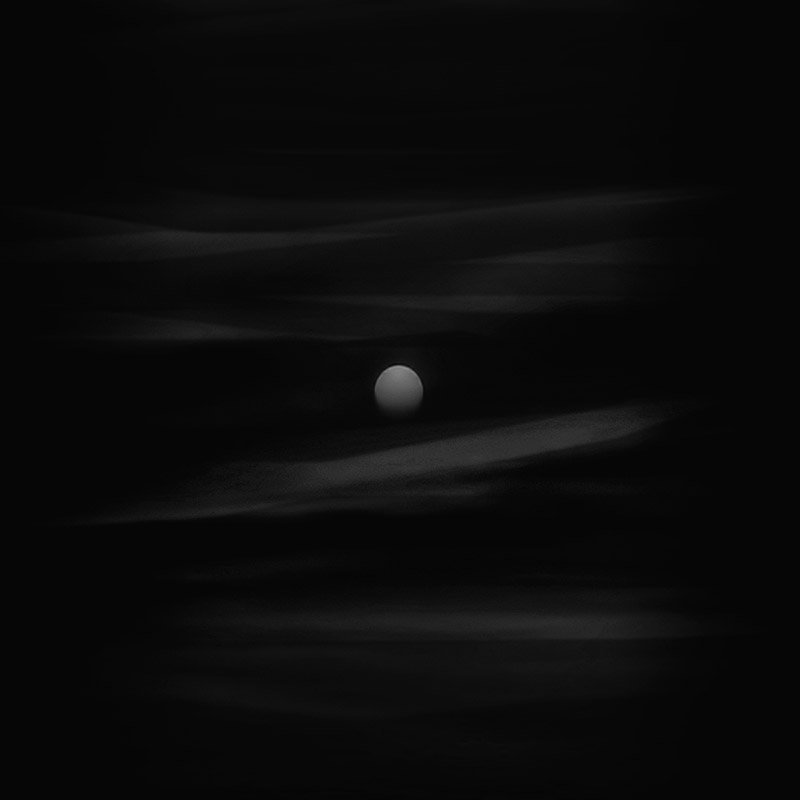
When you consider my “Skogafoss, Iceland” and “Embarcadero”, San Francisco images (part of my “Simplexity” series which is based on the theory), the asymmetric-symmetric compositions and long exposure techniques may offer peak shift effects (a “superstimulus”) in the waterfall and the contrasting shades in the buildings.
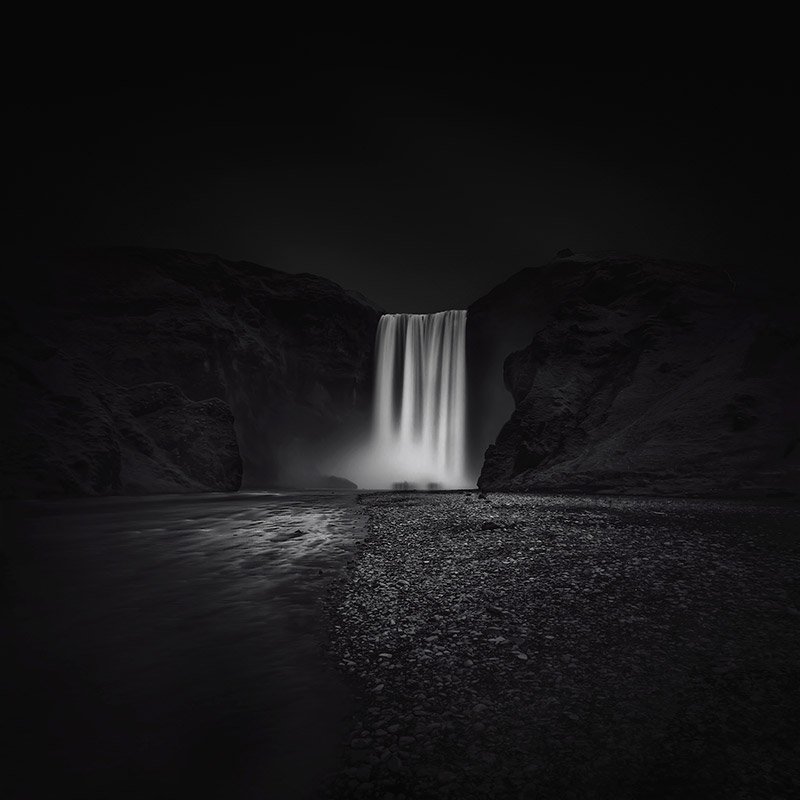
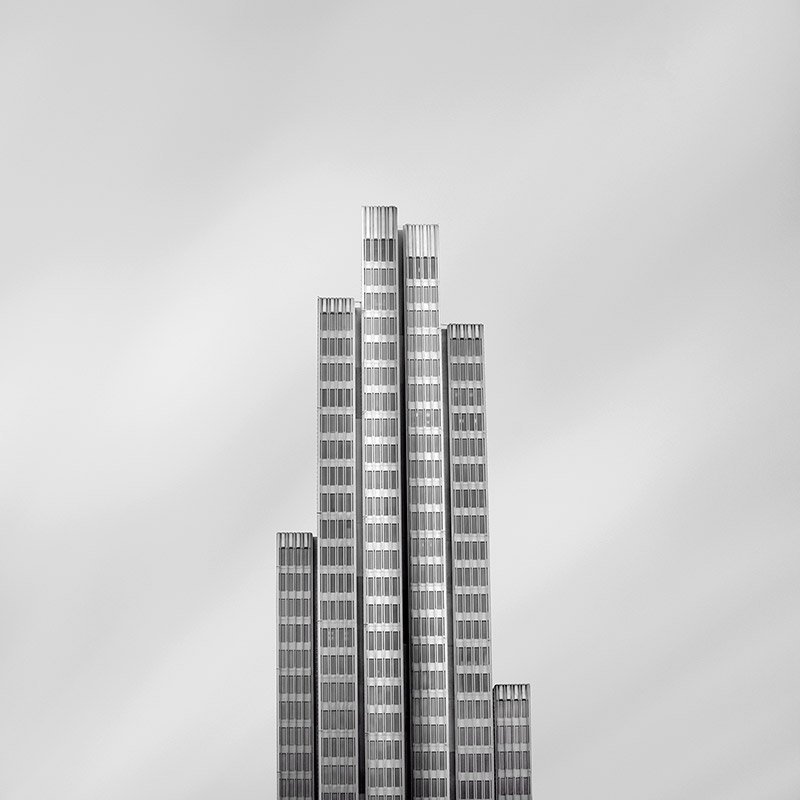
If you also consider Ramachandran’s take on “visual metaphors”, minimalist compositions are much like haikus or aphorisms. The two approaches may also be found in a seemingly “perfect” but transient lotus flower in an archipelago of imperfect lilly pads found in my minimalist “Silver Lotus” photograph. “Twin Prophets (Absolute Condos)” is also a visual metaphor and isolation within a grouping pattern by title and composition that gives a sense of “less is more” but also a contemplative majesty of moments.
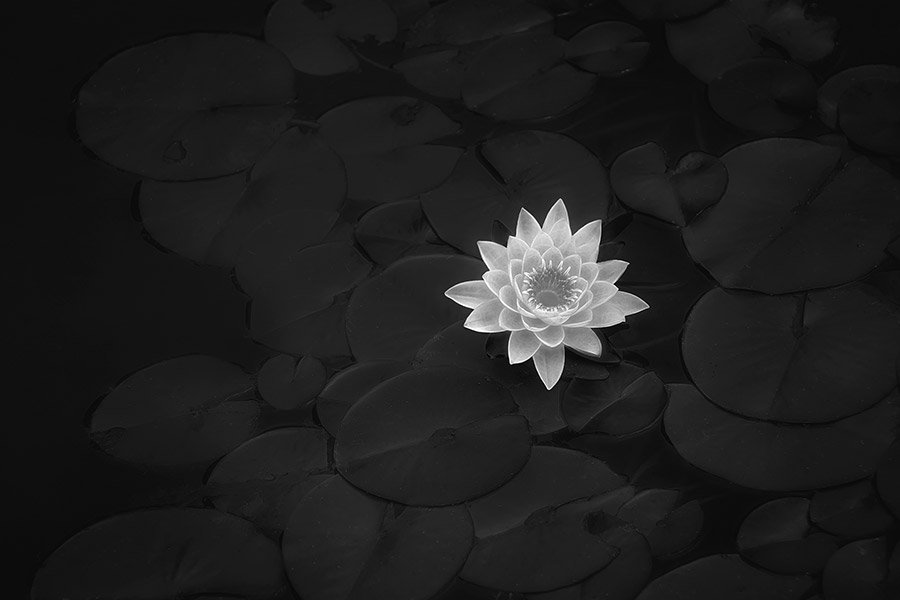
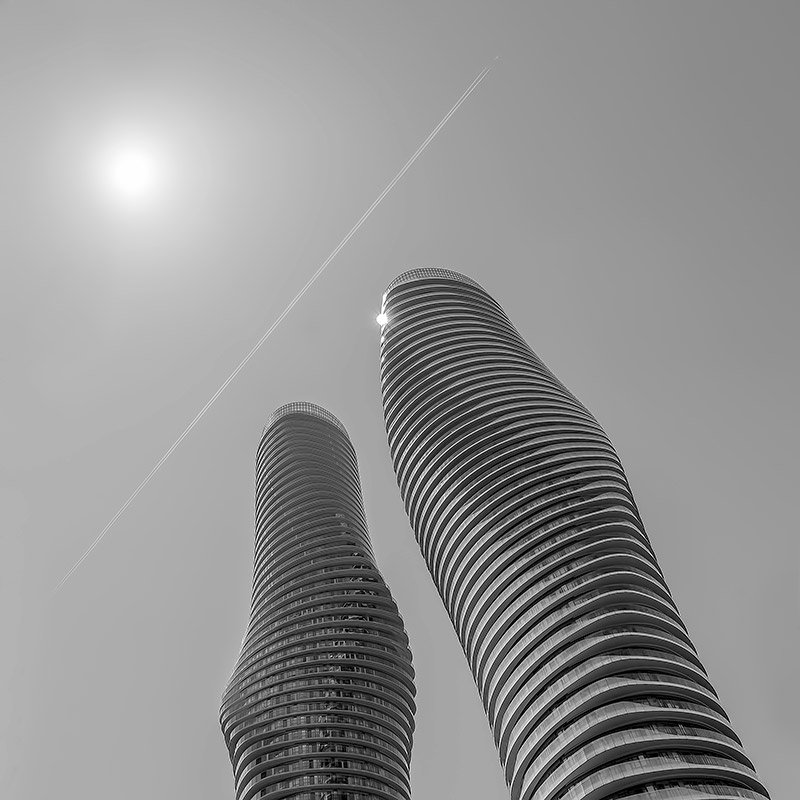
The contrasting rhythm in the withered bamboo fence of my “Zenstract” photo and the perceptual infinity of the bridge with an almost imperceptible cityscape in the background of the “Steel Fog” (Manhattan Bridge) image, may also offer some impressions of flow and fleeting moments. If you know the spot from where the bridge was taken, you will realize that is quite busy and there is a lot of other elements to consider. By distilling the image to its essence, regardless of how “perfect” the bridge may seem (it’s not), we become focused on the isolated subject and the transience of the fog as providing a story, some wisdom, about the need to refocus and simplify our busy lives.
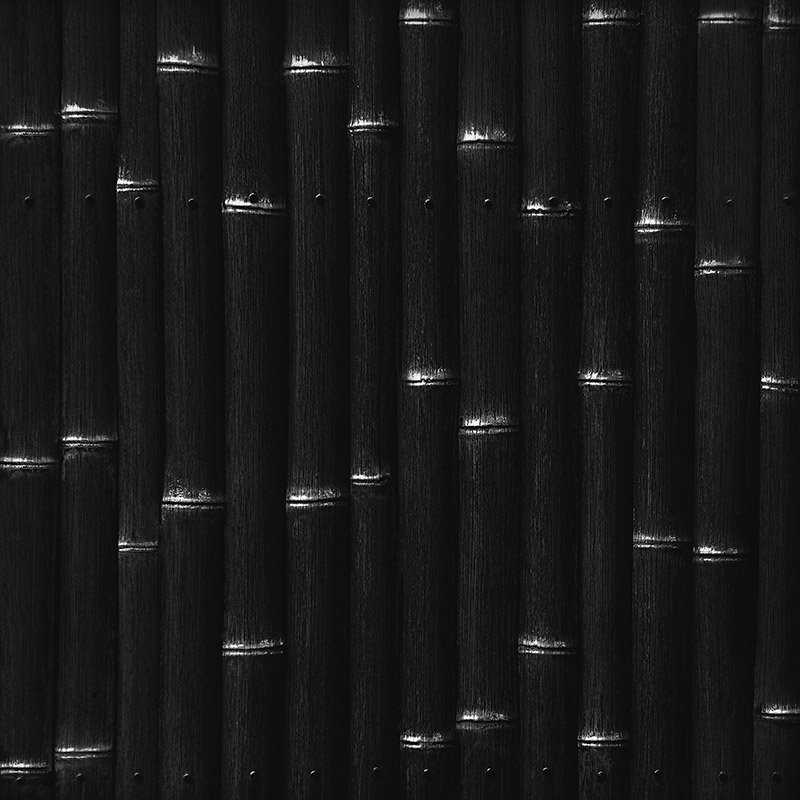
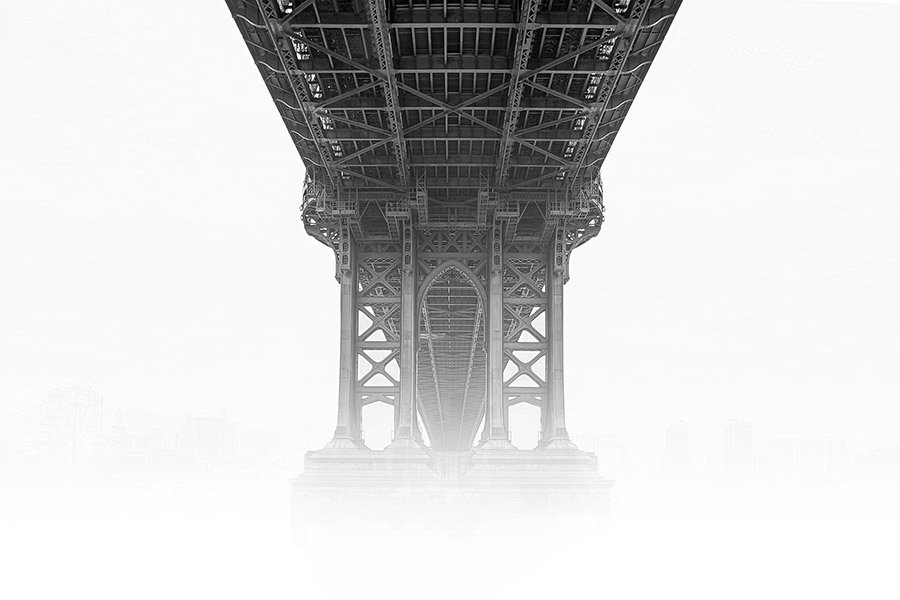
Felt Aesthetic
The idea of emotion and one’s own psychology playing a role in art is well known but the latter is not always well understood. I have commented before that I believe that the “felt aesthetic”, which I consider to be part of the DNA of inspiring art, and is part of my own humble attempt at defining fine art photography, is an essential and evocative quality in art. A “felt aesthetic” refers to the phenomenon or “feeling of being immersed in and inspired by something imaginatively and intellectually beautiful”. All you have to do is think about a piece of art that excited a so-called “third look” and you will understand this notion. That is what I experienced in the Dubai Desert and Black Beach in Vik, Iceland (please see images below). On the surface they might not seem like your traditional, minimalist photos (which is partly the point), but when I take a step back and think about the simplicity of the moment, the number of elements, the transitions (skies, waters) and even the lone figure that appears to anchor everything else, I can not help but think I was considering an alignment of these aesthetics in the moment. It all felt right and I now understand why I was drawn to such compositions.
As much as we delve into understanding the “why” of what constitutes great art or makes an artist great at what they do, which often speaks to the artist’s motivations in their art, we may also want to understand the equivalent “why not”. The “why not” is a curiosity-experiment and counterintuitive practice (e.g., why not do X or Y, or try this or that technique) that forms awakenings and revolutions in art. The combination of these ways of creating art may produce the context for the so-called “wow” factor (the enlightening and insightful qualities of a felt aesthetic). Minimalist photography, regardless of subject, helps shape and distill the complexity of moments into a kinetic vision for the artist.
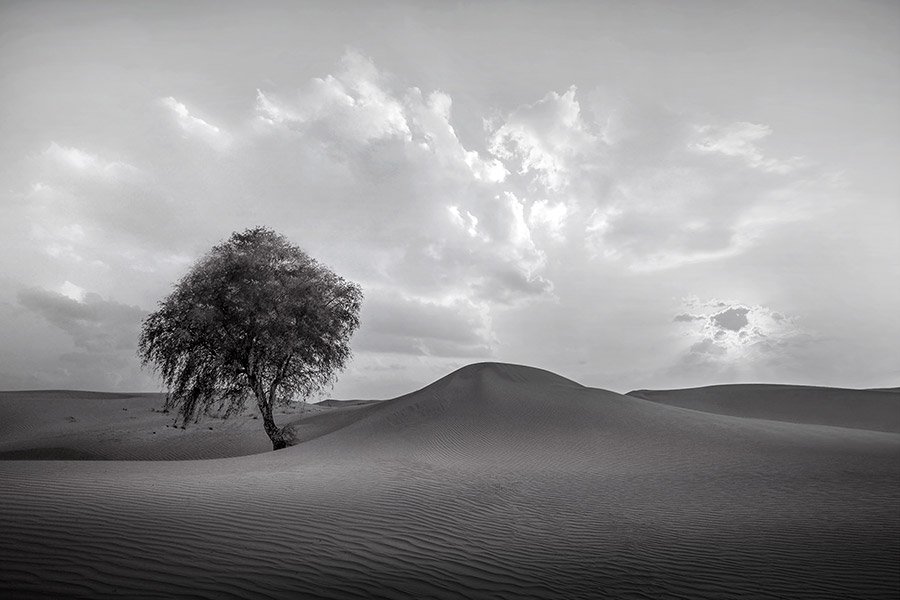
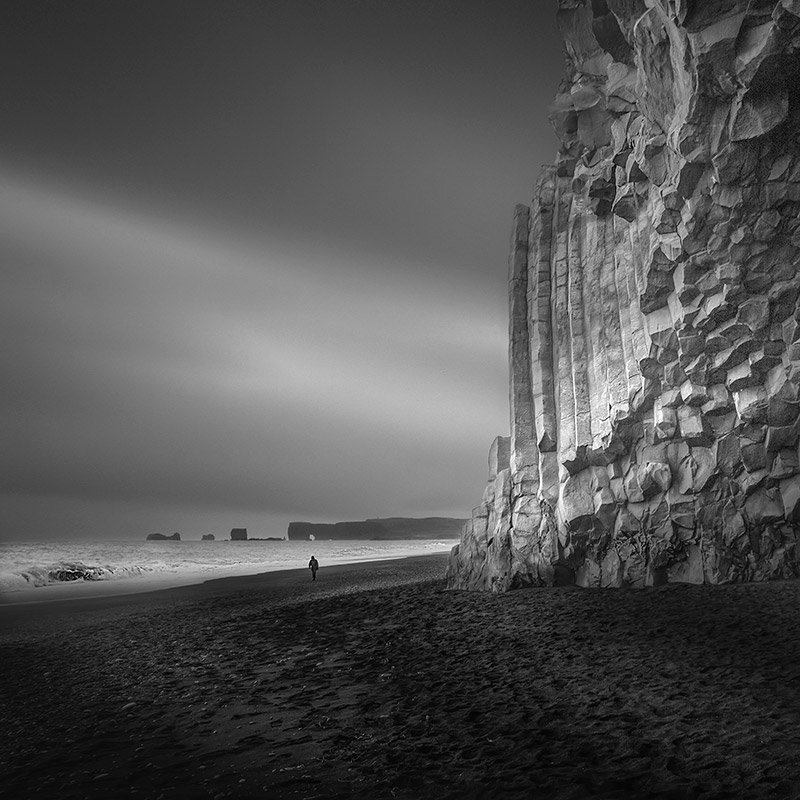
I still remember how Michael Kenna’s meditative, minimalist photography and Henri Cartier-Bresson’s “decisive moment” photography made me feel when I first viewed their exceptional body of work. They transported me. Alexey Titarenko’s images of various cities in his unique style inspired me to become eclectic and experimental in my photography. Hengki Koentjoro just simply blew me away with his seemingly effortless prowess with a palette of tones in his black and white photography. The lineage and legacy of Michael Levin’s and David Burdeny’s work, both inspirations of mine, also taught me to appreciate the power of a series in context and to consider going the extra mile to achieve powerfully beautiful imagery. But when I began to methodically consider their work, along with other photographers mentioned, I did see an alignment of all three aesthetics but I also very much noticed how one’s physical and social environment helps shape and inform one’s artistic practice and perception (something that is well known in psychology). Japanese aesthetics and neuroaesthetics may act as both antecedents (triggers or precedents) and positive consequences, a context for both constancy and change at the same time, which produce this phenomenon of the “felt aesthetic” in creating new worlds through our photography as artists.
A Creativity in Alignment
The practice of minimalism in the form of “Oramaku” means to consider an alignment of the three aesthetics as an illumination of what it means to photograph and be an “informed” photographer. As complex as this alignment may seem, I hope I have been able to take the “less” of minimalism and make it “less is more”.
Wabi-sabi helps us consider our photography in a curious light by appreciating the passing moments and feelings that come with the process and act of photography in a more mindful way. That is, it helps us perceive beauty in the idea that nothing is lasting, complete or perfect and that the experiences we take for granted or dismiss are worthy and noble pursuits in simplifying the way we practice and even “feel” art.
The application of neuroaesthetics to Art helps us consider how certain inherent and excitable elements (“peak shifts”) in a photograph reward our perceptions and tickle our imaginations and intellect deeply and playfully to make us feel the moment in an exalted way.
The “felt aesthetic”, as part of a psychology of fine art and the motivations of artists, considers how art is both contextual and functional (i.e., how it serves a purpose). It considers how our private thoughts, feelings, sensations become overt artistic behaviours or how such artistic behaviours influence our private events (i.e., which can be a powerful way to produce art instead of being stuck in our heads and not acting out our creative motivations). It also “sets the stage” for the artists to apply their curiosity and creativity within the physical and social environments. This process may also be true for the observer of art. The confluence of such events may produce this phenomenon for both the artist and the observer, a type of “non-zero sum psychology” that I have spoken about in previous interviews and posts on my website.
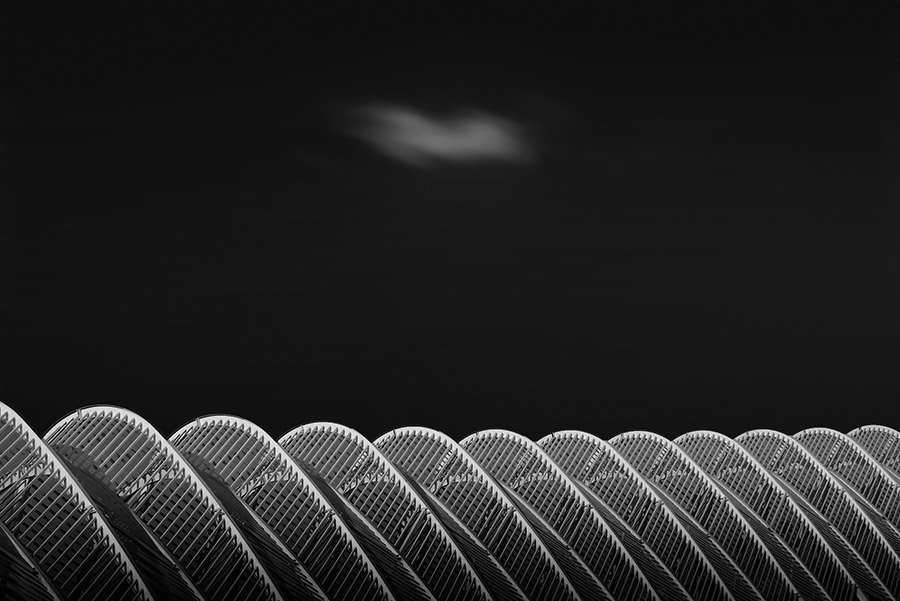
Oramaku is a way to embrace various aesthetics, both subjective and objective, across various genres much like my metaphorical “Ideality” photo above. The photo is more than a long exposure cloud over Santiego Calatrava’s Agora (Olympic Complex) in Athens; it is a bird flying over waves going in the same or opposite direction of the bird where both are bound together to leave an impression and story of a moment. I know what this photo does for me. You decide how your eyes, heart and mind faithfully align when you look at this photograph and your own photography.
The Art of Oramak
By John Kosmopoulos– (c) Copyright 2018 John Kosmopoulos / MinimalismMag.com


